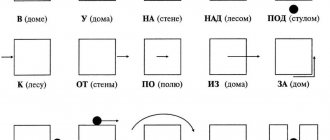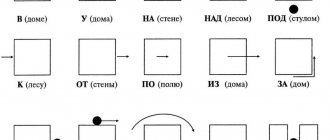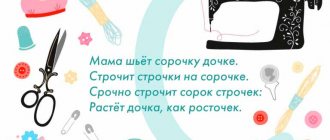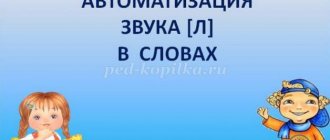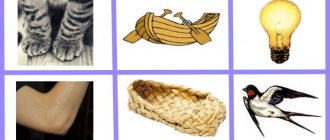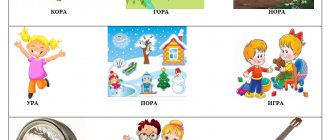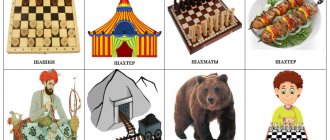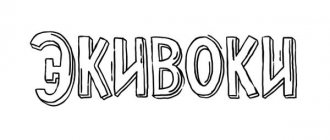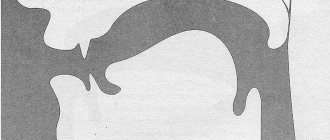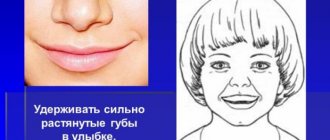Coloring pages for the sound “Ш” will be one of the stages in automating this sound. Coloring books themselves captivate children. Here they also carry an additional educational burden. Coloring pages for automating the sound “Ш” in words, phrases, and texts will help not only introduce the sound into speech, but will also develop the baby’s fingers. The coloring section “Determine the position of the sound in a word” will be useful in teaching children to read and write.
Helpful Tips:
- Before you start a lesson on automating the sound “Ш”, remember its correct articulation and do 2-3 exercises. This will prepare the baby’s speech apparatus and direct his attention.
- At the beginning of the lesson, ask the child to tell what is drawn in the picture. Ask him questions. Remind that the sound “Ш” must be pronounced correctly. If your child finds it difficult, help him by saying “difficult words and phrases” together.
- Learn simple sayings, ask them to retell texts and answer questions.
- Carry out classes with your baby systematically, 2-3 times a week for 20-25 minutes.
- You can practice coloring either individually or with a small group of children.
- In addition, coloring pages will develop the child’s fine motor skills. But it is better to color with pencils, as this will require more effort.
- It is advisable to choose triangular pencils. They help prepare the child's hand for writing, because... fit comfortably in three fingers - thumb, index and middle.
- Until the child learns to hold the pencil correctly (with his fingers, not in his fist), help him, otherwise there will be no difference between a triangular pencil and a round one, as well as no benefit.
- Another benefit of coloring books is that they will develop imaginative thinking and spatial orientation for your baby.
And, of course, remember the basic rule: the sound Ш must be pronounced correctly!!!
Speech material corresponding to mini-fairy tales-links:
1. Parsley eats cotton candy. 2. Straus is lying on the grass. 3. Three matted tails are sitting on the grass. 4. Under the book there are books and books. 5. Roma paints the fence with red paint. 6. The cow and the ram are eating grass. 7. An ant sleeps in an anthill. 8. Santa Claus gave Roma gifts. 9. A black cat sleeps under the hill. 10. There are two pockets on the shirt. 11. There are cucumbers, peppers and tomatoes in the basket. 12. Roma took a notebook, an orange pencil and a pen. 13. The truck is carrying potatoes, peas and carrots. 14. A black crow is sitting on the fence. 15. A magpie is eating a worm. 16. A tiger, a giraffe and a camel are running in the rain. 17. The woodcutter was killed with an axe. 18. The fish eats the worm. 19. A raven sits on the roof and eats cheese. 20. There are red balls and pink fish on the Christmas tree. 21. Little Red Riding Hood put pies in the basket. 22. Crocodile Gena gave Cheburashka a drum and an accordion.
Didactic material for literacy lessons. ABC coloring book
Class: 1
The purpose of compiling the manual: develops visual perception, attention, knowledge of colors, coordination and motor skills of the hand.
1. Take a green pencil and color in those parts of the drawing in which you see the letter “A” and “a”. Be careful not to paint over unnecessary parts.
2. Take a gray pencil and color in all the parts of the drawing in which you see the letters “B” and “b”.
3. Take a green pencil and color in all the parts of the drawing in which you see the letters “B” and “c”.
4. Take any colored pencil and color in all the parts of the drawing in which you see the letters “G” and “r”.
5. Take colored pencils and color in all the parts of the drawing in which you see the letters “D” and “d”.
6. Take a brown pencil and color in all the parts of the drawing where the letter "E" and "e" meet.
7. Use a gray pencil to paint over all parts of the drawing with the letters “Ё” and “е”.
8. Take a yellow and brown pencil and color in all the parts of the drawing in which you see the letters “Zh” and “zh”.
9. Take a pencil of any color and color all the parts of the drawing in which the letters “З” and “з” are found.
10. Take a gray pencil and color in all the parts of the drawing in which you see the letters “I” and “and”.
11. Take a green pencil and color in all the parts of the drawing in which you see the letters “Y” and “th”.
12. Take an orange pencil and color in all the parts of the drawing in which you see the letters “K” and “k”.
13. Take a brown pencil and color in all the parts of the drawing in which you see the letters “L” and “l”.
14. Take a brown pencil and color in those parts of the drawing in which you see the letters “M” and “m”.
15. Take a gray pencil and color in those parts of the drawing in which you see the letters “H” and “n”.
16. Take a blue or cyan pencil and color in those parts of the drawing where you see the letters “O” and “o”.
17. Take any colored pencil and color in all the parts of the drawing in which you see the letters “P” and “p”.
18. Take any colored pencil and color in those parts of the drawing in which you see the letters “P” and “r”.
19. Take a yellow pencil and color in those parts of the drawing in which you see the letters “C” and “s”.
20. Take any colored pencil and color in all the parts of the drawing in which you see the letters “T” and “t”.
21. Take a yellow pencil and color in those parts of the drawing in which you see the letters “U” and “u”.
22. Take a blue or blue pencil and color in all parts of the drawing where the letter “F” or “f” is depicted.
23. Take multi-colored pencils and color in those parts of the drawing in which you see the letters “X” and “x”.
24.Take a yellow pencil and color in all areas of the drawing with the letter “C” and “c”.
25. Take a brown pencil and color in all the areas of the drawing in which you see the letter “H” and “h”.
26. Take any colored pencil and color in those parts of the drawing in which you see the letters “Ш” and “ш”.
27. Take an orange or yellow pencil and color those parts of the drawing that are o and “u”.
28. Take a black pencil and paint over all areas of the drawing with the letter “Ъ”.
29. Take a red pencil and color in those parts of the drawing in which you see the letter “s”.
30. Take a black pencil and paint over all parts of the drawing in which you see the letter “b”.
31. Use a yellow pencil to fill in all areas with the letter “E” and “e”.
32. Color the parts of the picture with the letters “Y” and “Y” with multi-colored pencils.
33. Use a yellow pencil to fill in the parts where you see the letter “I” and the letter “I”.
Examination of the pronunciation of the sound “Ш”
When examining pronunciation, a specialist must find out how the sound being tested is pronounced separately, in words, in speech. For this purpose, images whose names include “Ш” can be used.
It is important that it occupies different positions and combines with other sounds. The little student is asked to recite a poem in which the words have an "W". If a child does not clearly pronounce an isolated “Sh”, you must first introduce this sound, and then consolidate its pronunciation in speech. If a child correctly pronounces a separate sound, but the defect is observed only in words, you need to work on consolidating it in speech.
Rules for testing at home:
- The child is in a calm state, repeating the necessary words after one of the parents. When forced into pronunciation, the sound is often distorted.
- The child pronounces the desired sound more than once. Sometimes children, even if they have a defect, can imitate the correct sound and the violation is not immediately noticed. It is easier to hear defective pronunciation in words where “Ш” is pronounced together with other consonants. To check, the child should pronounce the following words: chestnut, muffler, punch, mouthpiece.
For some children, the problem can be overcome in the first lessons; for others, the defect is dealt with step by step over some time, selecting appropriate tasks and techniques.
How to check the pronunciation of the letter “Ш” without a speech therapist
Speech therapists use a comprehensive examination procedure to identify the problem and its level. But you can check your child’s speech yourself. Pronunciation testing is carried out in isolation, in syllables, words, phrases and sentences, i.e. increasingly.
Checking the pronunciation of an isolated sound is carried out by the child repeating different sounds after mom or dad. Pronunciation in syllables is checked in a similar way. For a more comprehensive assessment, it is necessary that the letter “Ш” be in different positions (ША, ОШ, УШУ, OSHO, etc.)
It is important to consider that there may be a problem with the pronunciation of other sibilants. Therefore, if you decide to teach your child to say the letter “Ш”, then you should be prepared for the fact that you will have to correct other sounds.
To check the pronunciation of “Ш” in words, it is advisable to prepare or purchase cards with pictures. This will turn the procedure into a fun game. Speech therapy words starting with the letter “Ш” are selected so that the sound you need is in different positions. When choosing sentences and phrases, preference should be given to those in which it occurs in different places.
Pronunciation assessment
Pronunciation of any sound may be incorrect. In this case, the simplest option is the absence of the sound [Ш]. Then the child’s speech will sound something like this: apka, ina, maina, etc.
Sound distortion is more common. With buccal pronunciation, the air does not pass through the tongue and lips, but goes into the cheeks. The result is a dull noise at the output. You can visually see how the child’s cheeks are puffed up.
Sometimes a child can pronounce sibilants in the “down” position. In this case, it is not the tip of the tongue that approaches the hard palate, but the middle part of its back. In this case, you get something similar to [Ш].
If the baby manages to pronounce [Ш] the back part of the tongue, which approaches the hard palate. At the exit you can hear something resembling a fricative [X] or a voiced southern Russian [G].
Important! Only a speech therapist can accurately identify the violation.
When a child learns to speak, he can replace one sound with another. Often the hissing group is replaced by whistling ones - up to four years - this is the physiological norm.
If there are problems, the preschooler begins to change [W] to [S]. In this case, instead of “hat” he says “sapka”, instead of “machine” he says “masina”.
Exercises
First of all, you need to do articulatory gymnastics for the sound [Ш]. After setting it, the sound [Zh] will be created automatically with the addition of a voice.
Each task is completed after the example shown by a parent or teacher, preferably in front of a mirror. The complex lasts about 5 minutes, spend at least 10 seconds on one exercise. If the speech defect is severe, repeat all tasks 3-4 times a day; for mild sigmatism, one lesson per day will be enough.
Pancakes
Goal: relax the muscles of the tongue, teach the child to hold a small gap between the upper and lower row of teeth.
Technique: spread your tongue and place it on your lower lip in a relaxed state. He shouldn't tremble. Stretch your lips in a smile so that your teeth are visible. We count to 10.
